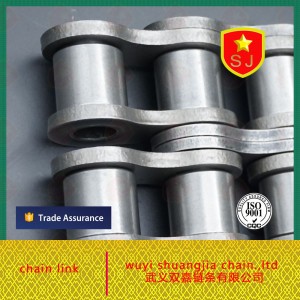Since the allowable range of the center distance of the chain drive, both in design calculation and debugging in actual work, provides generous conditions for the use of even-numbered chains, the number of links is generally an even number. It is the even number of the chain that makes the sprocket have the odd number of teeth, so that they wear evenly and extend their service life as much as possible.
In order to improve the smoothness of the chain drive and reduce the dynamic load, it is better to have more teeth on the small sprocket. However, the number of small sprocket teeth should not be too many, otherwise =i
will be very large, causing the chain drive to fail due to tooth skipping earlier.
After the chain has been working for a period of time, wear causes the pins to become thinner and the sleeves and rollers to become thinner. Under the action of the tensile load F, the pitch of the chain elongates.
After the chain pitch becomes longer, the pitch circle d moves toward the tooth top when the chain winds around the sprocket. Generally, the number of chain links is an even number to avoid the use of transition joints. In order to make the wear uniform and increase the service life, the number of sprocket teeth should be relatively prime with the number of chain links. If mutual prime cannot be guaranteed, the common factor should be as small as possible.
The larger the pitch of the chain, the higher the theoretical load carrying capacity. However, the larger the pitch, the greater the dynamic load caused by the chain speed change and the impact of the chain link meshing into the sprocket, which will actually reduce the chain’s load-bearing capacity and life. Therefore, small-pitch chains should be used as much as possible during design. The actual effect of selecting small-pitch multi-row chains under heavy loads is often better than selecting large-pitch single-row chains.
Post time: Feb-19-2024

